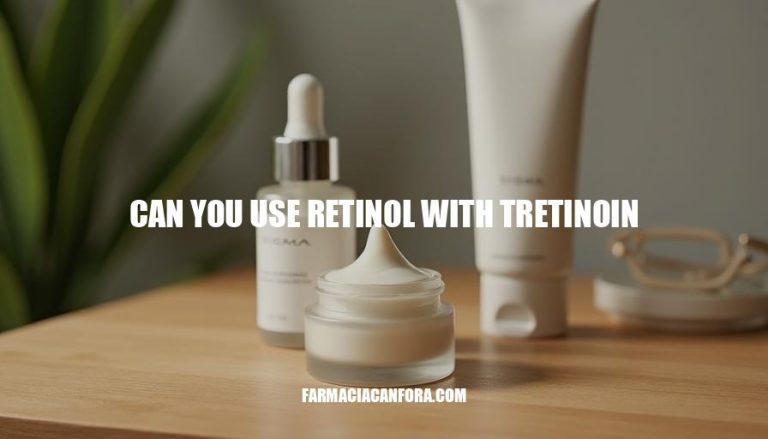


Retinol and tretinoin are two important helpers for your skin, both based on vitamin A. They work in different ways to make your skin look better. Retinol, found in many over-the-counter products, helps turn over old skin cells and produce collagen, which can reduce fine lines and uneven texture.
Tretinoin, a stronger version of retinol, is only available by prescription.
It works faster to get rid of acne, sun damage, and dark spots. But using them together requires some care, as it can cause irritation or dryness if not done right. When used correctly, they can help your skin look smoother and address multiple problems at once.
When using retinol and tretinoin together, it’s essential to follow a cautious and systematic approach to avoid irritation and maximize benefits. Here’s a step-by-step guide:
Patch Test: Before incorporating both into your routine, test each product on a small area of skin to check for adverse reactions.
Start with Low Concentrations: Begin with lower strengths of retinol (e.g., 0.01%-0.03%) and tretinoin (e.g., 0.025%) to allow your skin to acclimate.
Avoid Sensitive Areas: Do not apply these products near the eyes, nostrils, or mouth, as these areas are prone to irritation.
Sun Protection: Both retinol and tretinoin increase sun sensitivity. Use a broad-spectrum sunscreen daily, even on cloudy days.
Alternate Days: Start by using retinol and tretinoin on alternate nights to minimize irritation.
Frequency Adjustment: Gradually increase usage as your skin builds tolerance.
For example, after two weeks, you might use retinol twice a week and tretinoin once a week.
Layering: If combining them, apply retinol first, wait 20-30 minutes, and then apply tretinoin. Always follow with a moisturizer.
Cleanse Gently: Use a mild cleanser to prepare your skin. Avoid harsh or exfoliating cleansers.
Dry Skin: Ensure your skin is completely dry before applying either product, as damp skin can amplify irritation.
Pea-Sized Amount: Use a small amount of each product—about the size of a pea—to cover your face.
Moisturize: Apply a hydrating moisturizer after retinol or tretinoin to lock in moisture and reduce dryness.
Barrier Protection: Apply a thin layer of petroleum jelly or ointment to sensitive areas (e.g., corners of the mouth) before using retinol or tretinoin.
Hydration: Incorporate hydrating serums with ingredients like hyaluronic acid into your routine.
Pause if Irritated: If redness, peeling, or burning occurs, stop using both products and focus on soothing your skin with gentle moisturizers and calming ingredients like aloe vera.
Consult a Dermatologist: Seek professional advice if irritation persists or if you’re unsure about combining these products.
By following these steps, you can safely integrate retinol and tretinoin into your skincare routine while minimizing risks.
When considering using retinol and tretinoin together, it’s essential to proceed with caution and consult with a dermatologist for personalized advice.
Start by patch testing each product on a small area of skin to check for adverse reactions.
Begin with lower concentrations of both products (0.01%-0.03% retinol and 0.025% tretinoin) to allow your skin to acclimate.
Avoid applying these products near sensitive areas, such as the eyes, nostrils, or mouth.
Use a broad-spectrum sunscreen daily, even on cloudy days, as both retinol and tretinoin increase sun sensitivity.
Alternate using retinol and tretinoin on different nights to start, then gradually increase frequency as your skin builds tolerance.
Apply a small amount of each product (about the size of a pea) to cover your face.
Use a hydrating moisturizer after applying either product to lock in moisture and reduce dryness.
Consider incorporating hydrating serums with ingredients like hyaluronic acid into your routine.
Stop using both products and focus on soothing your skin with gentle moisturizers and calming ingredients.
Consult a dermatologist if irritation persists or if you’re unsure about combining these products.